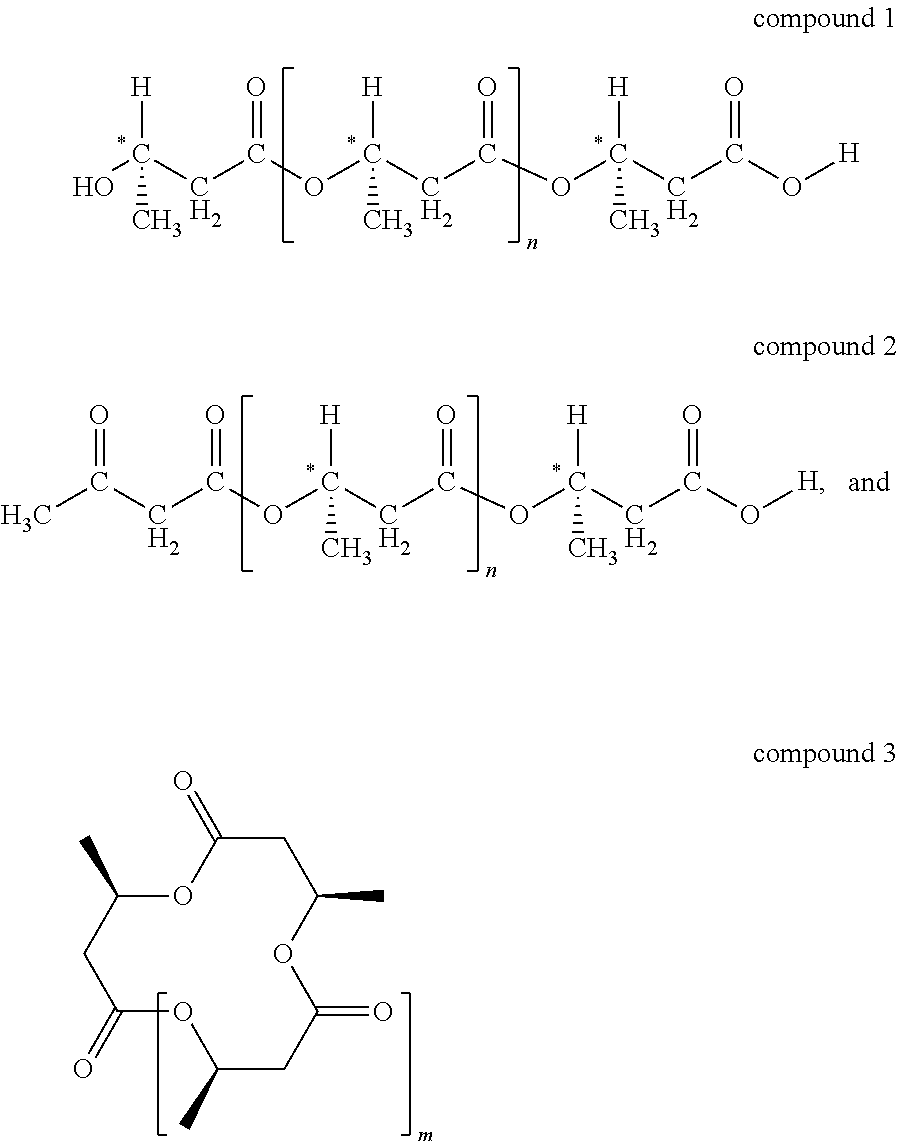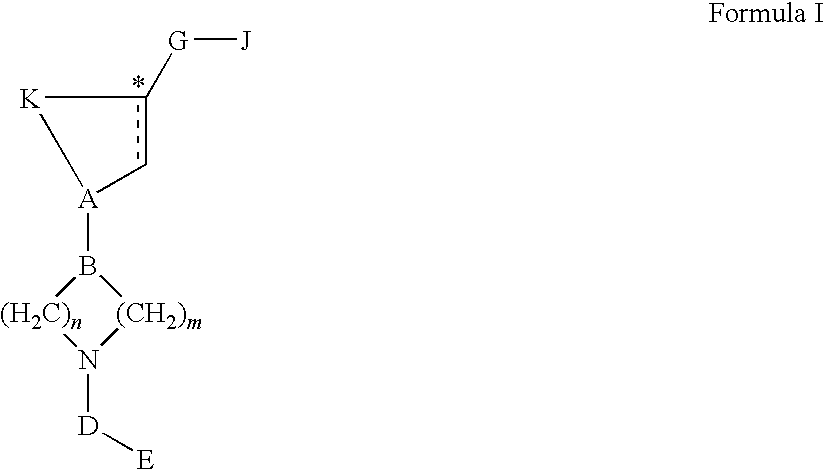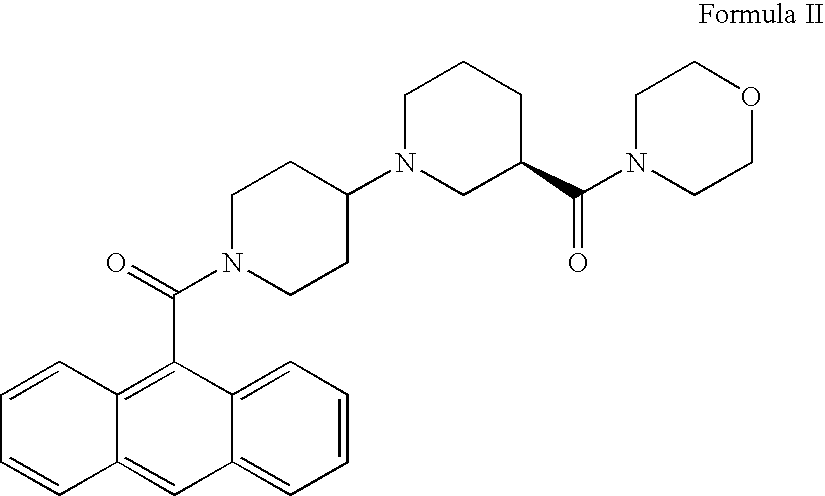Inhibitors of Acetyl-CoA Carboxylase for Treatment of Neuronal Hypometabolism
a technology of acetylcoa carboxylase and neuronal hypometabolism, which is applied in the field of therapeutic agents, can solve the problems of increasing susceptibility to glucose deprivation, early defects in cerebral glucose metabolism, and reducing mrna levels, so as to reduce neuronal metabolism, reduce neuronal metabolism, and treat cognitive loss
- Summary
- Abstract
- Description
- Claims
- Application Information
AI Technical Summary
Benefits of technology
Problems solved by technology
Method used
Image
Examples
example 1
Mouse Pharmacokinetic (PK) Study
[0090]Purpose: Determine blood levels of ketone bodies after oral (po) and intraperitoneal (ip) dosing of TOFA at different time points in the mouse.
Animals: 75 ICR male mice 6 to 7 weeks old were used. Each mouse weighed between 20-30 grams.
General Study Design: Animals (housed 3 / cage) were acclimated for at least 3 days prior to dosing. Mice were given either a single po dose (ranging from 0.5 mg / kg, to 5 mg / kg) of compound, or a single ip dose (1 mg / kg). Animals were anesthetized for blood collection at the times 0.5, 1, 2 and 3 hours. Whole blood (˜0.4 mls) was collected via cardiac puncture and collected into sodium heparin (Na Heparin, 1:9 ratio) anticoagulant. Blood was centrifuged for 8 minutes at 13,000 rpm to isolate plasma. The plasma was transferred into pre-labeled, color-coded eppendorf tubes and frozen at −70° C. Animals were observed for signs of toxicity and clinical observations recorded. Plasma levels of beta-hydroxybutyrate (BHB) w...
example 2
[0091]Use of an ACC inhibitor to elevate serum ketone levels in a rat model Sprague-Dawley rats are fed a standard commercial rat chow. After 15 days of acclimation, two groups of rats are fed an experimental diet containing 1-50 mg / kg / day of an ACC inhibitor, such as 5-(tetradecyloxy)-2-furan-carboxylic acid (TOFA) or CP-610431. A control group is kept on the standard chow.
[0092]The weight of each rat is measured daily. Urine samples are collected daily and analyzed for 3-hydroxybutyrate by enzymatic assay. After 5 days on the experimental diet, the rats are euthanized, and a blood sample was collected and analyzed for 3-hydroxybutyrate, acetoacetate and acetone by standard enzymatic techniques.
[0093]The concentration of ketone bodies in the rat blood plasma collected at time of euthanasia is measured by enzymatic methods. The control group is expected to show normal concentrations of 3-hydroxybutyrate and acetoacetate, approximately, 0.02-0.07 mM. Rats fed the ACC inhibitor are ex...
example 3
[0095]Neuroprotective effects of an ACC inhibitor in MPTP lesioned mice. 1-methyl-4-phenyl-1,2,3,6-tetrahydropyridine (MPTP), blocks complex I (NADH-ubiquinone oxidoreductase) of the mitochondrial electron transport chain, and causes typical symptoms of Parkinson's disease (PD) and the loss of dopaminergic neurons. C57BL6 mice receive daily orally gavage of CP-610431 at doses ranging from 0.001-5 mg / kg / day for seven days before they are lesioned with MPTP. During the 7 days of MPTP treatment animals will continue treatment with compound 1 or with a placebo. At the end of seven days animals are tested for behavioral effects of MPTP treatment and histopathology is performed.
[0096]Three groups of 10 animals are used for this experiment. Group 1 is treated with CP-610431 and lesioned with MPTP, Group 2 is treated with placebo and lesioned with MPTP, and Group 3 is treated with placebo and sham lesioned. After seven days of MPTP treatment behavior and motor skills are tested on all mice....
PUM
| Property | Measurement | Unit |
|---|---|---|
| concentrations | aaaaa | aaaaa |
| muscle stiffness | aaaaa | aaaaa |
| energy | aaaaa | aaaaa |
Abstract
Description
Claims
Application Information
 Login to View More
Login to View More - R&D
- Intellectual Property
- Life Sciences
- Materials
- Tech Scout
- Unparalleled Data Quality
- Higher Quality Content
- 60% Fewer Hallucinations
Browse by: Latest US Patents, China's latest patents, Technical Efficacy Thesaurus, Application Domain, Technology Topic, Popular Technical Reports.
© 2025 PatSnap. All rights reserved.Legal|Privacy policy|Modern Slavery Act Transparency Statement|Sitemap|About US| Contact US: help@patsnap.com



